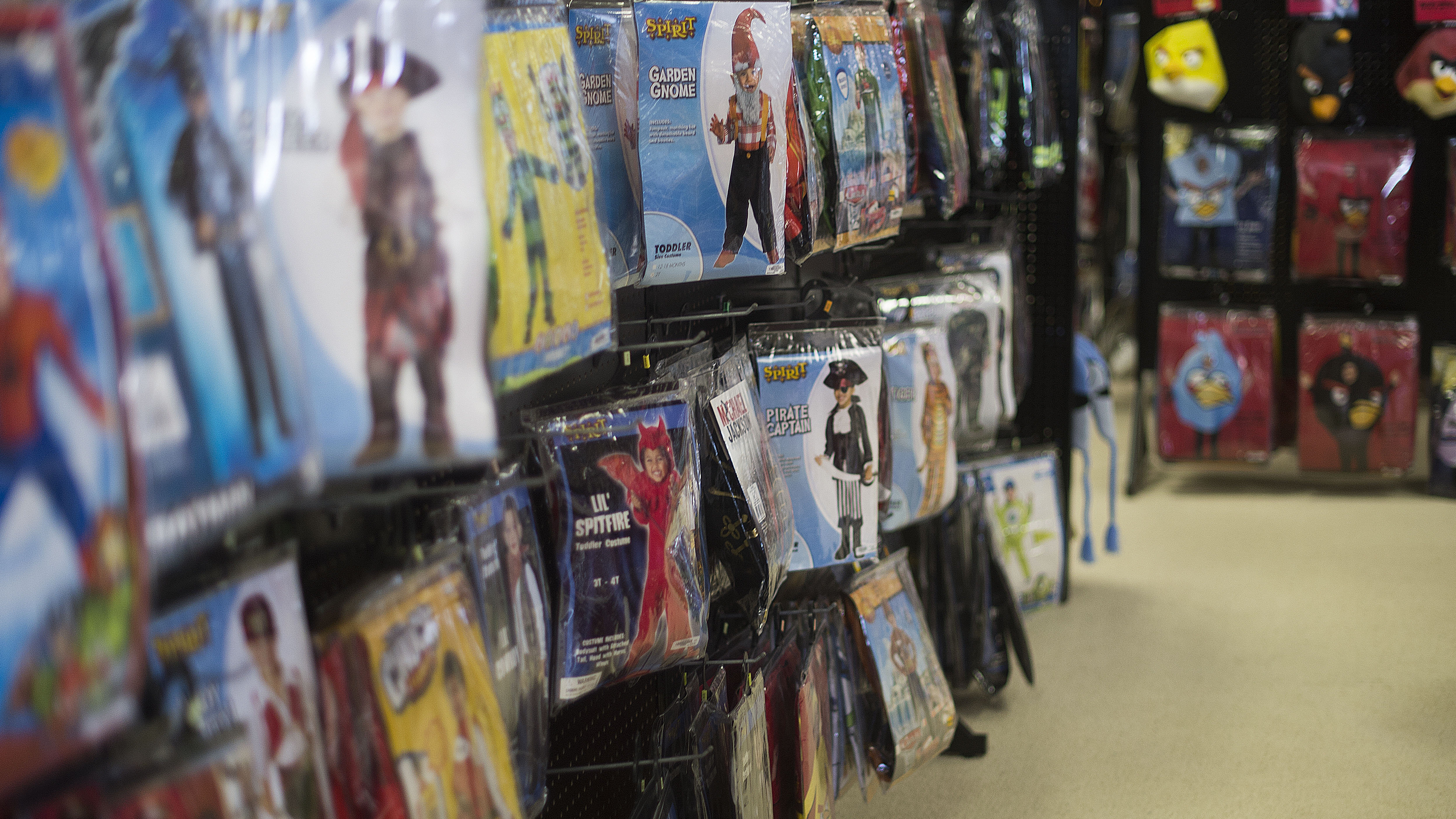
Children's Halloween costumes hang on a wall at a Spirit Halloween store. Like pumpkin patches, the seasonal pop-up shops are a signal that fall is upon us.
Jim Watson / AFP via Getty Images
In the world of spooky commerce, there’s one name that rises above the rest: Spirit Halloween. The seasonal retailer sells costumes, decorations and just about anything else somebody might need for Halloween.
Despite only operating from early August to early November, Spirit Halloween has become as much a part of the fall season as pumpkin patches and sweater weather, and with more than 1,400 locations in the United States in Canada, it's not hard to understand why.
Spirit Halloweens are everywhere. They appear seemingly overnight, taking over vacant buildings, then they disappear — only for the cycle to repeat itself next year.
A pop culture staple
The retailer has become so thoroughly ingrained as part of the season, it has made its way to internet memes.
is this too meta? #SpiritHallowmeme pic.twitter.com/8UewxUvRRI
— Spirit Halloween (@SpiritHalloween) October 26, 2022
Some have taken their love for the retailer a step further. Nick Lutsko, a singer, songwriter and the self-styled "current king of Halloween," produced a song about the retail chain appropriately titled "Spirit Halloween Theme."
Lutsko partnered with the company to produce a popular trilogy of videos last year.
According to Lutsko, the chain's prominence in pop culture comes down to consistency.
"It's a physical manifestation of Halloween. You're driving to work and you see a Spirit Halloween pop up — and it's like, 'OK, it's happening,' " he told NPR.
How Spirit Halloween fills the voids left by other retailers
Beneath the songs and the memes, the story of Spirit Halloween is really one of urban development patterns.
Perhaps above all, Spirit's business model hinges on space. Lots of it. Spirit looks for anywhere between 5,000 and 50,000 square feet of space, but in the company's own words, "no store is too large (or too small)" — and the company has no problem finding the space it needs.
Drop any ZIP code or address into the company's store locator, and a flurry of orange arrows is almost sure to pop up.
The company finds this space largely in abandoned buildings — malls that have shut down, retailers that have filed for bankruptcy and so on.
"Spirit is pretty much a bottom-feeder business that works only at the expense of other stores; if there weren't vacant storefronts, this business wouldn't exist," writes Rachel Quednau, program director for Strong Towns, an urban planning advocacy group that emphasizes incremental city planning.
From January to August, the company spends its time scouring the country and scoping out properties for temporary leases, and a big part of what makes this a reliable process for Spirit Halloween is that these abandoned spaces are otherwise unusable within local economies.
Why the spaces are empty to begin with
Spirit Halloween is a byproduct of what Strong Towns calls The Suburban Experiment, an approach to urban development that invests heavily in permanent structures — large retail buildings being a prime example of this. This kind of development requires big upfront investment, and the spaces it creates are hard to repurpose if, say, a chain goes out of business.
If a Sears or Toys R Us shuts down, for example, it's not easy to find another tenant to take over the space.
"So many businesses — a small restaurant, a small clothing store, whatever — would never be able to afford, or just wouldn't need, that huge amount of space," Quednau told Morning Edition.
That's where Spirit stores come in. The company takes advantage of these abandoned spaces and fills them — temporarily bringing otherwise vacant buildings back to life during the spookiest time of the year.
The phenomenon of Spirit Halloween is one of holiday celebration, but it's also one of urban planning and innovation. Currently, the free market can't figure out how to use abandoned retail spaces, and until it does, Spirit Halloween is likely to keep coming back.
This story originally appeared on the Morning Edition live blog.
Copyright 2022 NPR. To see more, visit https://www.npr.org.
